Polypropylene pipes and fittings: types of PP products for the assembly of pipelines and methods of connection
New technologies are changing the concept of strength and reliability. Not so long ago, it seemed that it was impossible to replace a metal pipe. Nevertheless, now the most common type of plumbing market has become polypropylene pipes and fittings for them. The assortment is large, it is important to know how to choose. Do you agree?
You will learn all about technological features and technical characteristics of PP products from the article we presented. We will tell you the guidelines according to which pipes and connectors should be selected. Compliance with our recommendations is a guarantee of the selection of the ideal material for the installation of pipelines.
The content of the article:
Types of PP pipes
According to the design basis, PP pipes are divided into two types:
- whole;
- reinforced.
Both types have a set of both positive and negative characteristics.
Pros and cons of whole products
One-piece, long products with the PPR mark are lightweight, durable and relatively inexpensive. The pipeline of them calmly tolerates freezing and thawing without changing the structure.
At the same time, a significant minus is the small temperature threshold of melting inherent in thermoplastics - 175⁰. The onset of softening occurs already at 135⁰.
Even if the water temperature in the system is stable and does not exceed 95⁰, but the pressure is high, a combination of these two factors can lead to a gradual decrease in the integrity of the material.
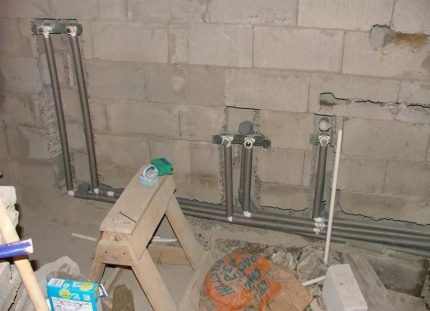
The obvious conclusion is that one-piece PP pipes for transporting very hot water are best not to be used. For plumbing devices with drinking or technical cold water they are quite suitable. Polypropylene does not affect the composition of water.
A special place in the category of integral PP pipes is occupied by modified polypropylene marked PPs - the most high-grade material. It is polyvinyl sulfide with a unique molecular structure. The diameter of PPs pipes is from 20 mm to 120 cm. Their use is universal.
Reinforced PP pipes
Reinforced pipe rolling differs from the whole one in a lower coefficient of temperature elongation. The reinforcing frame included in the pipes is made of fiberglass or aluminum foil.
Fiberglass frame is a more modern option. The advantage is simplified welding, since there is no trimming of the ends from the reinforcing layer and calibration. Since the frame is soldered into the body of the product, there is no such phenomenon as delamination. The linear expansion coefficient is 6%.
Aluminum reinforcement is continuous when perforated aluminum tape is inserted into the body during pipe production. The second option is to replace the tape with a mesh with small holes.
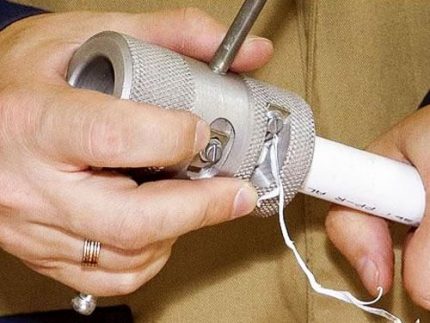
The PP pipe reinforced with aluminum tape is well tolerated by high temperatures. Actually this is already full plastic pipe. Connect such pipes along the inner layer. Before this, the outer shell and the reinforcing layer are removed.
With characteristic differences of metal-plastic and polypropylene pipes will introduce the articlededicated to the analysis of properties and assessment of the qualities of both varieties.
In cold regions, even the highest quality polypropylene pipes are not recommended for centralized hot water supply and heating. Plastic communications are better not to be exposed to significant temperature extremes.
Fittings for the water system from PP pipes
The name "fitting" itself comes from the English fit, which in translation sounds like how to assemble. With their help, pipes are joined in a straight line, at an angle, form contours and branches. In this case, the pipeline may include pipes of the same diameter or different.
Many enterprises produce polypropylene pipes; they constantly replenish the assortment of their products. It includes both simple fittings for polypropylene pipes and complex fittings. These elements for connecting pipes are threaded, crimped, welded.
A water system is created using the following types of them:
- couplings;
- corners;
- tees, crosses;
- drives;
- adapters.
The first one, with barrel geometry, is the simplest. The inner diameter of the "barrel" is identical to the outer diameter of the pipe. Its purpose is to connect pipes of equal section. Water supply requires complete tightness, only welding can ensure it.
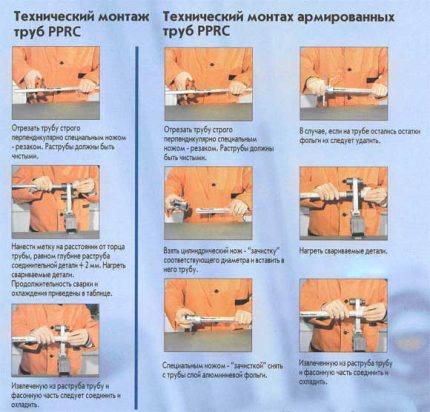
For this, the connecting elements must be made of the same material as the PPT. Since these parts are bell-shaped, they are put on the pipe. The connection occurs after heating two parts. If an unheated pipe can be inserted into a fitting, it is not suitable for pipe installation.
Classification of fittings for PP piping
The material from which polypropylene fittings are made may have a different composition, which affects the thermal stability.
On this basis, 3 types are distinguished:
- homopropylene - abbreviated PPG, marking - PPH, PP-1;
- block copolymer - denoted by the abbreviation PPV, marking - RRV, PP-S, PP-2;
- copolymer - PPR, marked with PP-3, PPRC, PPCR.
The first type is polypropylene with the inclusion of special modifying additives - nucleators, flame retardants, antiseptics.They give the final product a specific set of properties. Both pipes of this type and fittings are suitable exclusively for cold water supply.
The second is a polymer composed of homopolymer micromolecules arranged in the exact order. A finished product made of such a material is highly impact resistant. Since it can withstand high temperatures, it is suitable for hot water supply.
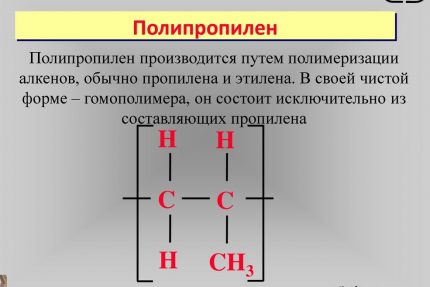
The structure of the rhombic copolymer is crystalline. The product does not lose its properties in a wide temperature range - -170 - 1400⁰. Elements from this material can have a cross section from 1.6 to 11 cm. They are used in many engineering networks. There is also a parameter such as MRS in the characteristics of polypropylene. This is a characteristic of the shortest durability.
It is associated with the maximum allowable pressure in the line. This pressure is guaranteed to provide excellent pipe service when transporting water at 20 ° C for 50 years. The indicator is directly related to the pipe wall thickness.
The pressure values are encrypted in the abbreviation PN with a digital prefix. It indicates the maximum permissible pressure during operation. The higher the digital designation, the greater the pressure loads the pipe can withstand.
Examples: PN10 - a pipe with a designated pressure of 10 bar, a pressure of 16 bar corresponds to a pipe PN16.
It is possible to distinguish both connecting elements and pipes for assembly heating systems and water pipe made of polypropylene by destination:
- to pass cold water;
- for transporting hot (maximum 70⁰) water.
There are also pipes used to create heating systems: low-temperature (maximum 60⁰) floor systems and radiator systems up to 90⁰.
Features of polypropylene couplings
PP couplings have thickened walls. Pipes are inserted into the coupling joint with some effort.
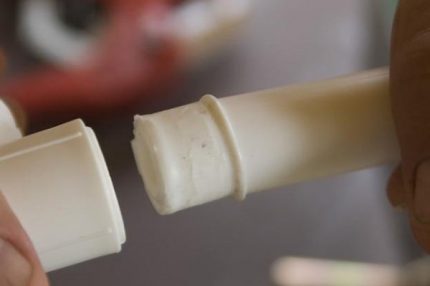
The main thing is that the part of the pipe that gets into the sleeve is absolutely smooth. The pipe is inserted into the connecting element until it stops, after fitting it is removed, heated to welding irontight and tight connect the details of the PP pipeline.
Transition elements for products of various diameters
Products of different sections are connected using a special type of adapter. It performs the same role as the coupling, but joins different diameters. If you want to continue the polypropylene metal pipe, also use these connecting elements.
In this case, they differ from simple couplings by the presence of an internal thread on one side. Hermetically seals such an adapter flat sections of the water main.
Corners and their scope
Water supply is not always an impeccable straight line. Sometimes it becomes necessary to form a right angle. Polypropylene is a rigid and non-bending material. But it can be bent if only preheated. Another thing is that this is not necessary.
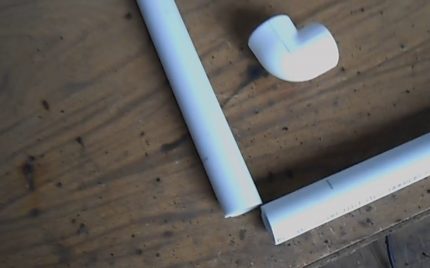
When the design temperature and pressure rises slightly, a leak may appear. The best way out in this situation is to use a fitting bent at an appropriate angle.
The bending angle is 45, 90⁰. There are corners with threads on one side. So mounting bathroom faucet, apply a corner having a cross section of 2 cm on the one hand, and on the other a 3-quarter internal thread.
Use of tees and crosses
In a situation where it is necessary to bring together more than two branches, tees are used, as well as crosses. For example, from the riser, you need to supply water to the bathroom, to the sink in the kitchen.
Such fittings have many modifications. Some take pipes at an angle of 90 °, others at an acute angle. To install valves on the connections of this kind of fittings are threaded on one side. The second side is for welding joints.
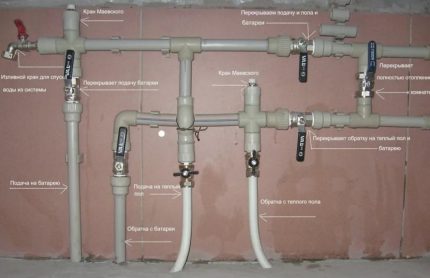
The temperature and heating time of polypropylene parts are strictly regulated. Introduces the indicated values next article, in which in addition to these important parameters you will find a detailed guide on how to connect PP parts by soldering.
Bypass elements for the water main
In the case of laying a water pipe passing along a complex path, you can not do without curved bypass parts. They are necessary when the pipe needs to be laid bypassing the obstacles located near the wall. They change the direction of the highway smoothly.
Visually, these details are similar to squares, but their bend is more round. With their help, it is possible to turn the water supply by 120⁰.
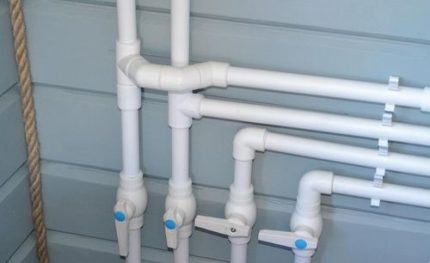
They produce polypropylene bypass fittings from PP brand PPR. Such elements fit well into the corner connection, and this is important for the external arrangement of communications.
The right choice of fittings by diameter
The selection of plastic fittings, as well as the connection method is carried out based on the material of the pipes. In any case, a circuit is first created, then determined with a view of the connecting elements.
For a system of polypropylene pipes, fittings for diffuse welding or soldering are suitable. This is an inexpensive way, but provides a monolithic and 100 percent tight connection of polypropylene pipesused in the assembly of heating, sewer and water networks of any complexity.
The diameters of the connecting elements are related to the diameter of the pipes. In turn, the latter value is interconnected with such a parameter as the throughput of the water supply system. When choosing the required diameter, several nuances must be taken into account.
In the marking of tubular products there is an external diameter, in the value of which rather thick pipe walls are also taken into account. Therefore, with the same outer diameter, the permeability of the polypropylene pipe will be less than, for example, metal-plastic.
The polypropylene pipe inside is absolutely smooth as opposed to steel. No deposits are stored and accumulated in it. So if initially the inner diameter of this type of pipe was the same, the PP pipe will provide a more efficient cross-country.
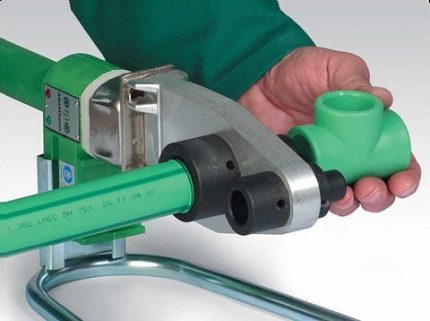
For the plumbing in a cottage or apartment with a standard set of water points, the best option would be a pipe with a diameter of 20 mm. Larger diameters are more suitable for implementing water supply schemes for microdistricts.
Fittings in this case are not needed. Docking is performed by welding. Steel flanges are used to incorporate check valves into the system.
A few additional tips for choosing
The selection of PP pipes and the same fittings for the water supply is a crucial moment.
Going to the construction market, it will not hurt to remember that it is useful to be guided by the following key criteria:
- features of the future system in specific conditions;
- kind of engineering communications.
Varieties of PP pipes used in the construction of heating systems, given here. We advise you to read a very useful article.
Any pipeline has its own characteristics.
They should also be considered when choosing:
- For water supply, polypropylene pipes of gray or white color are mainly used.
- The assembly of the pipeline from polypropylene involves the use of a specific soldering iron for PP pipes and special varieties of pipe cutters.
- If the choice is difficult due to the breadth of the assortment, you need to take products that match such parameters as quality, cost, convenience, inexpensive installation.
- You need to know that the connecting elements to the PP pipes cannot be replaced with fittings designed for PVC pipes, even if they have the same dimensions.
Each manufacturer positions its products with high quality, durability. Therefore, for a decent choice, you need to compare pipes produced by different companies in some respects.
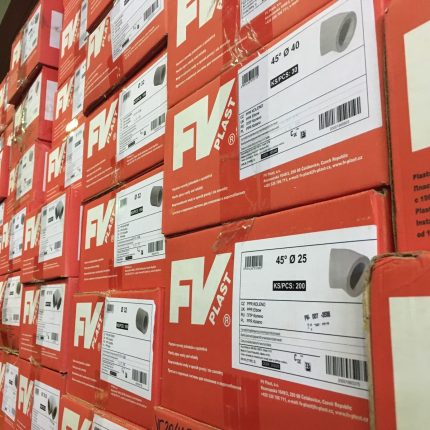
The first parameter is the presence of the required diameters, atypical compounds, mass. Of considerable importance is the appearance. If this is a decisive moment, then pipes made in the Czech Republic look more presentable, and Turkish ones are plain-looking compared to them. In particular, Czech FV PPR pipes are an excellent option for cold and hot water distribution.
To them, Faser produces fittings and accessories. Suitable for hot water and FV THERM pipes, but due to the high cost this is not practical. The manufacturer Faser, in order to visually distinguish products for cold water supply, marks them with stripes on a white surface.
Another nuance is the value of SDR. With a high rate, excellent cross-country ability with relatively thin walls is observed. Low SDR is a sign of low traffic while at the same time high density and strength. Durability and durability are also important. Manufacturers warranties must not be ignored.
Cuttings of a polypropylene pipe remaining after the construction of the pipeline can always be used. For example, you can make a chair for country or home decor. You will find a guide to its manufacture in our recommended article.
Conclusions and useful video on the topic
Video # 1. The principles of choosing PP pipes:
Video # 2. Recommendations from the sellers of sanitary equipment for the selection of PP pipes and components:
You will learn about all the technical characteristics of the products, as well as about the company that produced them, from the markings located directly on the product. Do not forget to study them when buying. Do not neglect the advice of specialists.
With a good start-up, you can independently design an excellent plumbing system for your home. If you have doubts about your abilities, the decision to turn to plumbers will be cheaper. Otherwise, alteration can entail significant additional costs.
Tell us about how you bought polypropylene pipes and fittings for assembling home or country communications. Share the criteria that influenced your product selection. Please leave comments, ask questions and post a photo on the topic in the block below.

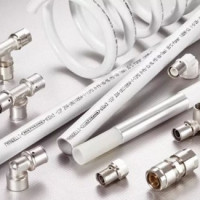 Press fittings for plastic pipes: types, marking, purpose + installation example
Press fittings for plastic pipes: types, marking, purpose + installation example  Copper pipes for heating: types, specifics of marking + application features
Copper pipes for heating: types, specifics of marking + application features 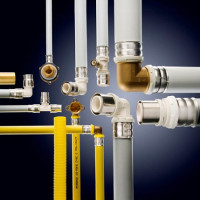 Plastic pipes: types, specifications, installation features
Plastic pipes: types, specifications, installation features 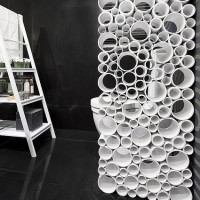 Screen made of plastic pipes: types of partitions + step-by-step manufacturing instructions
Screen made of plastic pipes: types of partitions + step-by-step manufacturing instructions 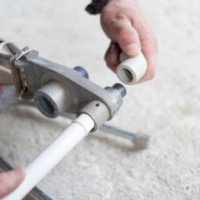 Plumbing pipe connection methods: an overview of all possible options
Plumbing pipe connection methods: an overview of all possible options  Pipes for irrigation in the country: a comparative overview of various types of pipes
Pipes for irrigation in the country: a comparative overview of various types of pipes  How much does it cost to connect gas to a private house: the price of organizing gas supply
How much does it cost to connect gas to a private house: the price of organizing gas supply  The best washing machines with dryer: model rating and customer tips
The best washing machines with dryer: model rating and customer tips  What is the color temperature of light and the nuances of choosing the temperature of the lamps to suit your needs
What is the color temperature of light and the nuances of choosing the temperature of the lamps to suit your needs  Replacement of a geyser in an apartment: replacement paperwork + basic norms and requirements
Replacement of a geyser in an apartment: replacement paperwork + basic norms and requirements